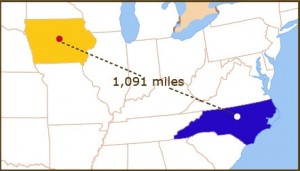 Welcome to our first 1091 Project post, a new effort in collaborative blogging!
Welcome to our first 1091 Project post, a new effort in collaborative blogging!
1,091 is the number of miles between Ames, Iowa and Durham, North Carolina. Ames is the home of Iowa State University and our colleagues who write Parks Library Preservation. On the third Friday of each month, we will pick a topic and write about that topic from our own perspectives to highlight the similarities and differences between our programs. Our hope is that we will learn from each other and spark conversation between us and between our readers. If there are topics you are interested in hearing about from us, please leave them in the comments box.
The Verne and Tanya Roberts Conservation Lab is located on the lower level of Perkins Library. We work on both general (circulating) and special (non-circulating) collections. Our program has one full time technician to work primarily on general collections, plus 0.5FTE student assistants and two volunteers to help her. Three conservators and one technician work primarily on special collections materials. And there is me, the head of the Conservation Services Department. That makes six full time staff, two volunteers and our student assistants all working diligently to maintain our collections. Last fiscal year we repaired over 2,800 items from the collections and made over 8,500 custom enclosures.
1091 Project: A Day In The Life Of The Conservation Lab
 A typical day begins at 8am with the collection of the damaged books from Circulation, with a stop in Shipping & Receiving to pick up books sent over from the branches or from Perkins technical services. These are brought to the lab and each item’s bar code is scanned to change it’s process status to “in preservation.” The books are sorted by the type of repair or enclosure they need and put onto our shelves. This allows staff to pull several books needing the same repair. By working in batches our repair procedures are more streamlined and efficient, and the work turns around faster.
A typical day begins at 8am with the collection of the damaged books from Circulation, with a stop in Shipping & Receiving to pick up books sent over from the branches or from Perkins technical services. These are brought to the lab and each item’s bar code is scanned to change it’s process status to “in preservation.” The books are sorted by the type of repair or enclosure they need and put onto our shelves. This allows staff to pull several books needing the same repair. By working in batches our repair procedures are more streamlined and efficient, and the work turns around faster.
When the Rubenstein Library opens at 9am, we will collect any damaged items that were used in the special collections reading room. We will also pick up any special collections items sent over from Rubenstein Library’s technical services department for enclosures or pre-shelving repair needs. We will transfer these items to the lab and enter them into our Lab Log, which is a list of all the special collections materials that are in Conservation. The conservators will write a condition report for each item, then they will meet with the curators to discuss treatment options and agree on what will be done. Once they sign off on a treatment, digital photographs will be taken before treatment begins, and again after treatment. These will be filed with the written treatment documents when the items are returned to the library.
 If today is Boxing Day, everyone in the lab will work on making custom enclosures for special collections. Boxing Day is great for your statistics since you create several boxes in one day, but it can be challenging to remain productive while the board shear is occupied or someone else has the corner rounder. It’s a good exercise to figure out how to remain productive while waiting for equipment, and it’s amazing how much prep work you can do while you wait.
If today is Boxing Day, everyone in the lab will work on making custom enclosures for special collections. Boxing Day is great for your statistics since you create several boxes in one day, but it can be challenging to remain productive while the board shear is occupied or someone else has the corner rounder. It’s a good exercise to figure out how to remain productive while waiting for equipment, and it’s amazing how much prep work you can do while you wait.
As department head, my time is spent planning, managing the budget and staff, and gathering information, or as I call it, “keeping the wheels on the Conservation bus.” Every now and then I get to work at the bench, but it’s never as much time as I would like. My day is usually spent meeting with colleagues to find out how we can improve our services, and developing new initiatives and strategies to ensure our services are aligned with the Library’s strategic plan and direction. I may attend a lot of meetings, but I find this “strategery” to be rather fun and challenging. We are on the verge of some new and exciting initiatives that I can’t wait to roll out.
Other things our staff may be doing on any given day include helping our Exhibits Coordinator install an exhibit, working with the Digital Production Center to repair materials before imaging, and working with the Head of Preservation to record insect activity or environmental conditions in the library. And if it is April 1st, we will be holding our annual Edible Book Festival. Many of us also contribute to the profession by publishing research, presenting at conferences, and actively participate on state- and national-level committees. You can find more images from the lab on our Flickr page and you can also follow us on Facebook and Twitter.
That’s our typical day, let’s see what is happening over in Ames at Parks Library Preservation. [link is now working 1/20/12 1:52pm]
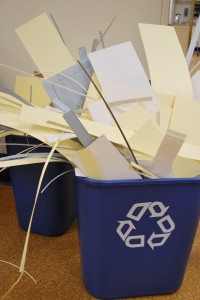
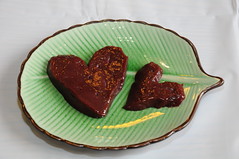



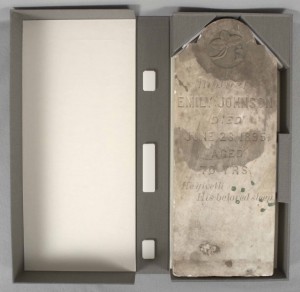












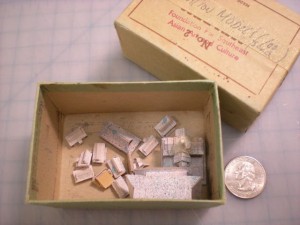


 With contributions from Winston Atkins, Preservation Librarian
With contributions from Winston Atkins, Preservation Librarian  Gifts to $100
Gifts to $100